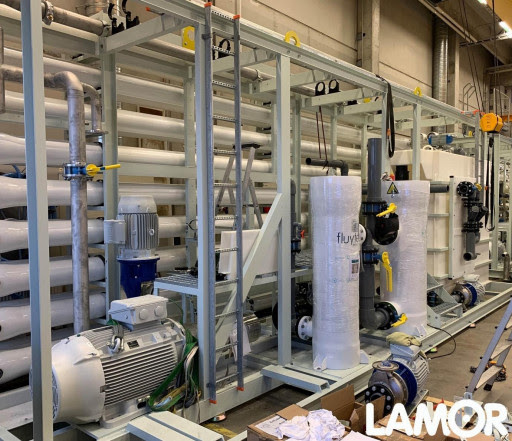PORVOO, Finland, Sept. 21, 2021 (GLOBE NEWSWIRE) — Lamor Corporation provides Reverse Osmosis-systems for brackish and seawater treatment.
Finland has been one of the leading countries in cruise vessel construction for decades, and various large cruise companies such as Royal Caribbean, TUI and Carnival have purchased their vessels from Finnish shipyards. For years cruise line companies have been concerned about fuel consumption and recently this has extended to their CO2 footprint. Now this same trend has reached aquaculture.
Finnish companies who have delivered Reverse Osmosis (RO) systems to cruise vessels have been forced to pay exceptional attention to the systems’ energy efficiency. Modern RO technology has changed rapidly in terms of process design during the past 10 years and the development of the energy recovering units have also brought some variables to the equation.
In simplified terms it can be said that currently there are two types of energy recovery units in the market. The first energy recovery device (ERD) developed – which is still available – was the turbo-type unit which collected reject water and spun a turbine. The compression turbine made the pressure increase to the membrane inlet water. A few years later a Danish company developed an ERD-unit which also uses the reject water pressure to increase the inlet water pressure, but this process happens through a pressure exchanger.
Energy efficiency can also be increased by methods other than equipment. Of course, friction losses in the pipelines and the pumps play a significant role but even better results can be achieved with intelligent process design. By selecting the membrane quantities according to the actual need, fine tuning the produced water quality and calculating all the key elements together, the energy consumption can be minimized. These same principles also apply to aquaculture and the same know-how can be adapted to live fish carriers.
But how does intelligent process design and equipment selections affect operating costs? The simple math shows that by reducing energy consumption by 1 kW/produced cubic metre, the average sized live fish carrier operator could save about 100,000 USD and 350 Tons of CO2 annually.
Easy and flawless operation is one of our strengths, and the developed automation software and user interface guarantees a stress-free operation experience for the users. Our reverse osmosis systems can provide you with fresh water safely, efficiently, economically and reliably.
Modern pre-treatment methods enable the extended lifetime of the RO membranes. We have collected the data from the systems and serviced our equipment for years. By providing this information to our development team we create even better solutions. This operation model has been the cornerstone of our development and provides the easy and flawless operation our customers enjoy today.
Lamor also offers a wide variety of other cost-efficient, customizable water treatment, oil spill response, and waste management solutions worldwide. Learn more about our solutions at lamor.com and contact us today for a personal quote.
Communications: Iryna Besarab – iryna.besarab@lamor.com
Related Images
This content was issued through the press release distribution service at Newswire.com.
Attachment


